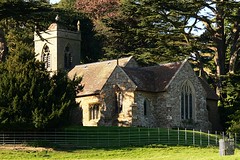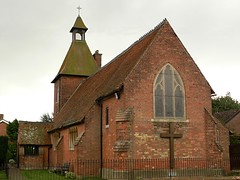
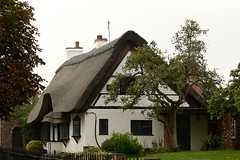
Originally built in 1848 as a school by William Butterfield, with the schoolmaster living in the tower. It was also used as a church on Sundays, but became a chapel in 1905 and then as a church in 1925 when it was dedicated St Edmund (841-869).
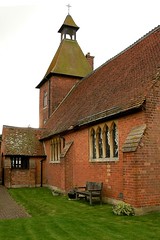
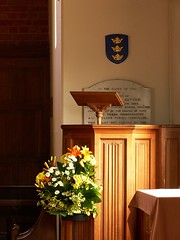
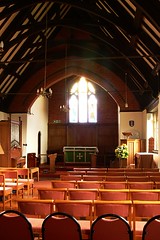
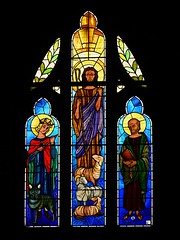
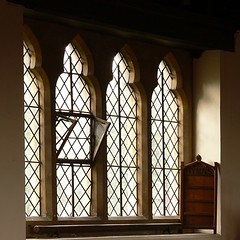
Access: Open.
Tags: edmund, stained glass, tower
Comments Off on Thurlaston – St Edmund.
The small church of St. Mark was built with railway money in 1891 as compensation for the disruption to the nearby ancient village of Wolfhampcote. The railway was closed to passengers in 1952. However, freight trains ran along the line until 1963.
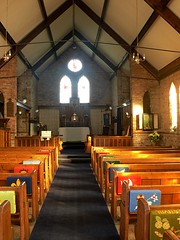
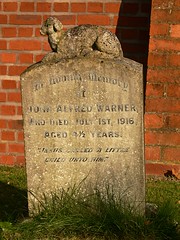
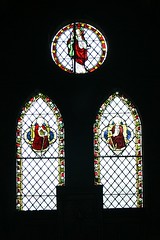
Access: open on day of visit
Tags: mark, stained glass
Comments Off on Flecknoe – St. Mark.
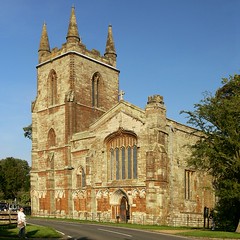
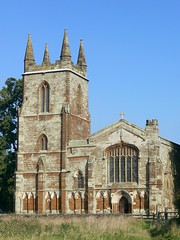
St Mary’s parish church was part of Canons Ashby Priory. The white ashlar trefoil arches of the west front are c1250 built by Augustinians. The large west window is of later construction, and the tower was built c1350.
Today the church consists of just two bays of the original medieval building, the rest was demolished to by the Copes and Drydens in the late 16th century to build their respective homes.
One of the floor tiles is embossed with the Dryden Coat of Arms which has the addition of the “Red Hand of Ulster” to normal Dryden Arms. The “Red Hand of Ulster” is a frequent ornament to much of the Canons Ashby House.
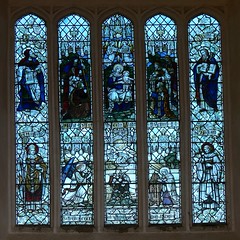
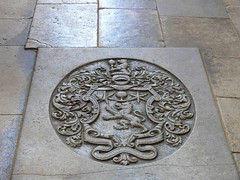
Access: Open same time as National Trust property.
Tags: mary, stained glass, tower
Comments Off on Canons Ashby – St Mary.
The Church has been on this site since the 13th Century but the only original part is the base of the tower, the upper part of the tower is 18th century. Most of the rest of the church was rebuilt in 1844.
The interior contains a number of 16th-18th century monuments, dedicated to the Shuckburgh family.
The church itself stands on a small rise in the deer park of Shuckburgh Hall which is a few 100 metres away.
The tower contains 4 bells from the mid 17th century, three of which were made by Henry Bagley.
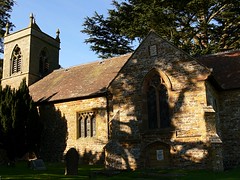
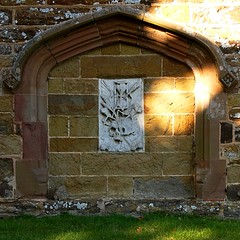
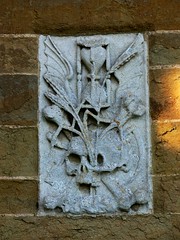
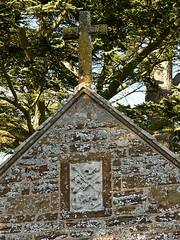
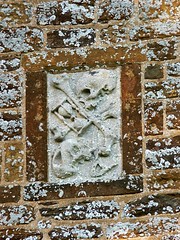
The local church history quotes from “The Kings of England, Warwickshire Book’ by Arthur Mees’s which says these stones came from Cardinal Wolsey’s Palace in Esher, but they look far too modern to me. Another souce says that they are 18th century.
www.british-history.ac.uk/report.aspx?compid=57132
Access: Locked no contact details
Tags: john, john the baptist, stained glass, tower
Comments Off on Upper Shuckburgh – St John the Baptist in the Wilderness.
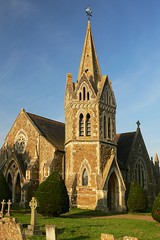
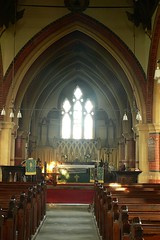
Church of St John the Baptist. Rebuilt after a fire in 1864 the previous church dating back to the late 13th century. Constructed of a mixture of light and dark sandstone with limestone bands, the church stands on the local Blue Lias clay which has caused structural damage due to shrinkage.
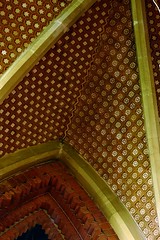
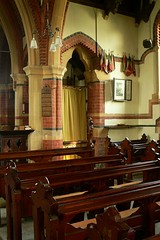
The interior is decorated with Moorish tiles in a Gothic style
Access: Guided access available with churchwarden who lives nearby
Church website.
Tags: john, john the baptist, spire, stained glass
Comments Off on Lower Shuckburgh – St John the Baptist.














